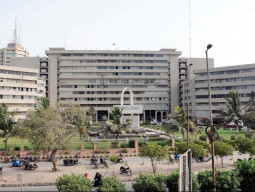
Ecological disruptions caused by increased use of toxins like DDT since the end of World War II made it easier for the transmission of mosquito-borne diseases, according to AKUH’s Dr Erum Ali. Major outbreaks of dengue in Pakistan, however, occurred in 2005-06 and 2008-09. Patients often report to doctors when they experience high-grade fever and body pain. Dr Erum said that from thereon, it is the physician’s responsibility to order tests that will determine the stage of the disease. The NS1 antigen test should be done as soon as the fever starts, while the IgM test is recommended when almost six days have passed since the onset of the disease.
While touching upon the basics of the transmission of the disease, Dr Farheen Ali said that it was a common misconception that mosquitoes bred in ponds, drainages and canals. Underground water tanks, flower vases, fountains and even toilets provide the right atmosphere for mosquitoes to breed. People can use repellants, especially those containing DEET or picaridine or icaridine, as they were colourless and odourless. Four types of vaccine are currently being designed for the disease, but until they hit the shelves of medical stores, Dr Farheen advised people to use other preventative measures.
Dr Aslam Pervez, who represented the city government on the occasion, out that since 2006, when the first dengue outbreak was reported in the city, nearly 5,000 patients had been been confirmed and 22 deaths have been recorded. He added that due to the government’s efforts, fewer people were contracting the virus. The number of such patients had dropped to 700 last year, he said. So far this year, 242 people have tested positive for the disease in the city. The total number of positive cases from Sindh stands at 244.
However, Dr S M Wasim Jafri, a professor of medicine at AKUH, said that the actual number of people contracting the disease was higher than the official figure. “The government cannot wipe out the disease. People have to take personal initiative to stay clean and keep their environment hygienic.”
Published in The Express Tribune, October 5th, 2012.


















COMMENTS
Comments are moderated and generally will be posted if they are on-topic and not abusive.
For more information, please see our Comments FAQ